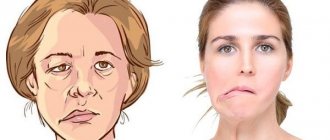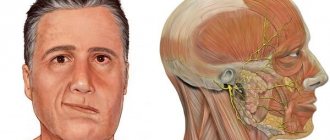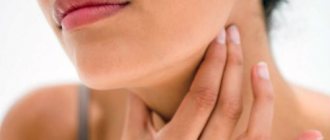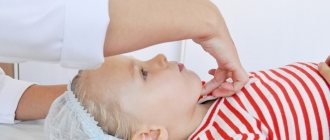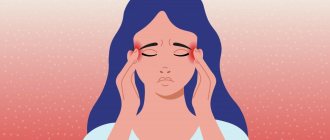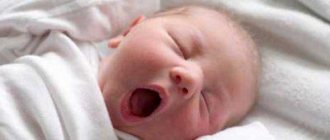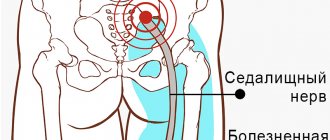Treatment of neuritis
Incorrect or untimely treatment of neuritis can lead to irreversible mental disorders. Severe pain in the trigeminal nerve area prevents normal chewing of food, resulting in decreased appetite and worsening general health. Prolonged and sharp pain becomes a common cause of depression, high blood pressure, partial paralysis, etc.
Treatment is carried out both with drug therapy and massage sessions. Drug therapy uses drugs from several groups:
- antiepileptics;
- antidepressants;
- steroid painkillers;
- anti-inflammatory;
- antispasmodic and muscle relaxants.
Among the antiepileptics, Carbamazepine is often prescribed. The drug has a quick effect, but has many side effects. During use, it is necessary to constantly monitor the condition of the liver and conduct regular blood tests. Of the ointments, Viprosal quickly blocks an attack of pain, and Apizartron is prescribed to stimulate the functioning of nerve endings and increase muscle elasticity.
To reduce attacks of pain at home, you can use an alcohol infusion of lilac buds, birch buds and grated horseradish. Warm tea made from St. John's wort, mint and raspberry leaves helps relieve the condition.
Treatment of neuritis is always long-term and can take up to 10 months if the doctor’s recommendations are fully followed. In case of congenital pathology and pathology of a traumatic nature, as well as in cases where treatment has not given positive results within 10-12 months, surgical intervention is resorted to.
The effectiveness of massage
Massage for neuritis of the facial nerve allows you to restore the function of facial wrinkles. For home sessions, the patient is taught to relax muscles, which reduces pain and spasms and improves the movement of blood and lymph. A massage course for neuralgia, consisting of 20-25 sessions, allows you to:
- increase muscle tone;
- normalize the movement of biological fluids in tissues;
- improve skin condition.
The positive effect of massage on the nervous system allows the patient to relax, get rid of anxiety and nervousness, insomnia and symptoms of stress. When done correctly, the first positive changes are noticeable after just a few sessions.
Indications for massage treatment
Facial massage for facial neuritis is an important part of the complex treatment of the disease. Sessions begin 7-12 days after the first signs of neuritis appear, and the main indications for therapeutic general massage are:
- inflammatory processes of a toxic or infectious nature in the nerve;
- mechanical nerve damage;
- disruption of the facial muscles.
Supportive massage sessions are also carried out for residual effects after an illness.
For concomitant purulent diseases of the respiratory system, massage is used with caution, because active blood movement contributes to the rapid spread of infection in tissues.
Symptoms
The inflammatory process begins to develop gradually. At first there may be a feeling of pain behind the ear, but after a few days facial asymmetry occurs. The patient has a drooping corner of the mouth on one side, and the eye on the affected side squints poorly. When you try to close your lips into a “tube” on the affected side, your mouth becomes distorted. When you try to “blow out the candle,” the cheek on the affected side “sails.” There may be lacrimation from the eye on the affected side. With this pathology, a person loses the sense of taste on the front of the tongue. Hearing disturbance and increased salivation may occur. When closing an eye on the affected part of the face, the eye may not close completely. The patient's smile is asymmetrical. Symptoms develop over one or two days.
Massage techniques
For neuritis, several massage techniques are used, as well as a set of special exercises. Regardless of the chosen technique, the main movements are performed in the directions of the massage lines. The use of amplification techniques, as well as tapping and effleurage, is prohibited.
Segmental
Carrying out segmental massage aims not only to strengthen facial muscles, but also to relieve swelling and congestion in the nerve canal, as well as improve the conductivity and excitability of nerve endings. The massage technique for neuritis includes several techniques:
- vibrating soft movements;
- light stroking massage with fingertips;
- trituration;
- stroking.
All movements of the massage therapist should be light, without pressure. If there are no concomitant inflammatory diseases, then additional use of a vibrating massager is possible.
A segmental massage session for the treatment of neuritis begins with massaging the forehead. The forehead is stroked with an open palm from the central point to the temples, after which it is carried out with light rubbing. Vertical strokes are carried out from the eyebrows to the hairline. After stroking, apply light pressure with your fingers from the central point to the temples. Then they repeat the strokes and move on to vibrational patting of the entire surface of the forehead.
After the forehead, massage the area around the eyes. Using your fingers, they pass from the outer corner of the eye along the lower edge to the inner one. Use the middle and index fingers to lightly touch the upper eyelid. Then, with pointed circular movements, massage the outer edge of the eye socket, the lower edge towards the inner corner of the eye and the area above the eyebrows.
Move on to massaging the lower jaw, nose and lips. Usually the massage begins with the healthy half of the face, and gradually moves to the affected half. Techniques for this area are carried out using the index and middle finger along lines from the middle of the chin to the wings of the nose, along the sides of the nose to the bridge of the nose, along the back of the nose to its tip. Sequence of techniques:
- horizontal rubbing;
- vertical rubbing;
- point pressure;
- light point pressure;
- stroking;
- pincer-like stroking.
Finish the session by massaging the cheeks. The entire area is stroked with the palm of the hand, then rubbed linearly. Next they do:
- circular acupressure;
- forceps massage;
- zigzag stroking;
- point pressure with fingertips;
- tingling;
- light patting;
- horizontal active stroking.
All techniques alternate with soft relaxing strokes. The use of segmental massage in the treatment of neuritis requires a gradual increase in the load on the muscles. The first introductory sessions are always carried out in a gentle mode, selecting the optimal force of influence.
Spot
Acupressure facial massage is a simple but effective technique that is also suitable for independent use. The technique uses the impact of the surface of the fingers on biologically active points on the body, which are the projection of organs and systems. For neuritis of the facial nerve, massage is performed at the following points:
- between the eyebrows. The point is massaged for several minutes for pain, fatigue, or decreased concentration;
- below the inner edge of the eyebrows. The area is massaged to relieve nasal congestion, nerve pain and improve vision;
- above the corners of the lips. The points are massaged to relieve symptoms of stress;
- on the back of the neck along the spine. Massaging the points helps eliminate the symptoms of nerve inflammation, get rid of headaches, eye pain, and migraines;
- 2 cm above the auricle. Massage of the point relieves headaches and helps with neuritis of the auricular nerve.
After the massage, it is recommended to rest for a few minutes and do 2-4 breathing exercises . Do not perform acupressure if you have high blood pressure or chronic diseases of the cardiovascular system.
Self-massage
At home, self-massage of the face is carried out using the classical method. Facial massage consists of several basic techniques:
- circling with fingertips;
- circling with fingertips;
- tingling.
All techniques are performed first on the muscles of the healthy half of the face.
The session begins with pinching at the base of the nose, gradually moving along the eyebrow line to the temples. Then pinching passes along the lower jaw from the midpoint of the chin to the bottom of the ears. Next, the face is massaged in circular movements with minimal pressure. Massage techniques affect the side of the nose, forehead, hairline area, temples, and chin. Then intense circular movements are made through the cheekbones to the temples. With slight reinforcement, they pass along the sides of the nose to the lower edge of the cheekbones and to the ears. Next, the pads of the middle fingers are pressed to the inner corners of the eyes and slowly move them towards the ears. The forehead is massaged with circular, slow and sliding movements.
The session is completed by massaging the entire surface of the head and face. They pass from the temples behind the ears to the back of the head, massaging the forehead, chin, cheeks, and the front surface of the neck with light pressure.
Tests and diagnostics
A neurologist makes a diagnosis based on the patient’s complaints and clinical picture. The neurologist may ask you to make movements with your facial muscles - close your eyes, bare your teeth, raise your eyebrows, puff out your cheeks or whistle, and wrinkle your nose. Such tests allow the doctor to determine the presence of neuritis. If the diagnosis is in doubt, the doctor may prescribe the following tests:
- CT, MRI;
- Electroneuromyography (ENMG);
Additionally, the neurologist may recommend consultation with a neurosurgeon and otolaryngologist.
Gymnastics for facial muscles
In addition to massage, simple gymnastics will help alleviate the condition of neuritis. It should be performed daily.
- Raise your eyebrows, showing surprise on your face.
- Frown as much as possible, lowering your eyebrows.
- Make several movements with the eyeball, while the eyelids are closed. You should “look” with your eye in both directions, as well as down and up.
- Close your lips tightly, while stretching them into a smile as much as possible.
- Squint your eyes tightly for a few seconds and then relax your muscles.
- Close your lips tightly, and then try to lift only the upper lip so that only the front teeth of the upper jaw appear.
- Repeat the previous exercise for the lower lip.
- Take in as much air as possible and inflate your cheeks as much as possible.
- Close your mouth, suck in your cheeks as much as possible, while sticking out your eyes, imitating a fish.
- With lips tightly closed, “count” with your tongue all the teeth on the lower and upper jaw.
All exercises must be performed in front of a mirror. You should pause between different exercises, completely relaxing your facial muscles. It is also necessary to make every effort to achieve complete symmetry of the movements of the two sides of the face when performing gymnastics.
Features of massage for other diseases of the facial nerve
Properly selected manipulations, taking into account indications and contraindications, help:
- improve local blood circulation;
- eliminate muscle spasms;
- will restore facial activity;
- correct speech defects that have arisen under the influence of pathology.
The speed of obtaining therapeutic results depends on timely seeking medical help.
Facial nerve paresis
To solve the problem, experts use rubbing in the form of semicircles with constant stroking. Vibration and ultrasonic therapy methods show good effectiveness for paresis.
Neuralgia of the facial nerve
Requires separate techniques:
- stroking the face and back of the head;
- rubbing the shoulders, neck until the dermis becomes slightly red;
- small vibrating movements in the area of the cheekbones and forehead;
- weak effect on the skin of the nose, eyebrows, nasolabial triangle.
Important! A professional massage therapist will be able to enhance metabolic processes, blood circulation in the problem area, and accelerate the removal of decay products.
Inflammation of the trigeminal nerve
The pathology requires treatment of the facial, head, and cervical-collar areas. Massage of the trigeminal nerve on the face and these areas leads to:
- normalization of blood circulation;
- lymph outflow;
- stable nutrition of tissues.
The course is conducted with the utmost care. If the rules are violated, a new attack is possible due to the impact of trigger areas.
Inflammation of the trigeminal nerve
